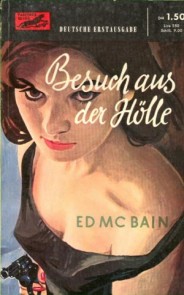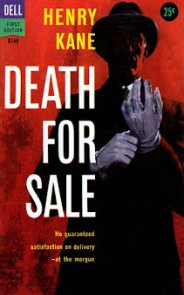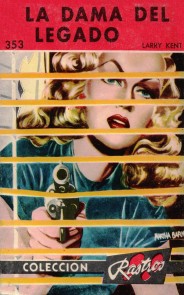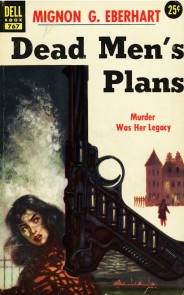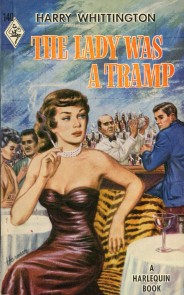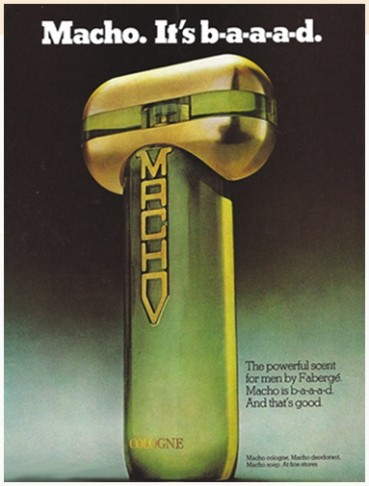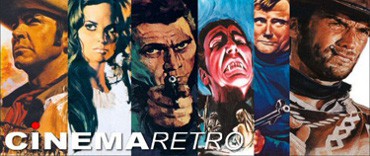 Strange ideas from the minds and lenses of mid-century promo photographers. 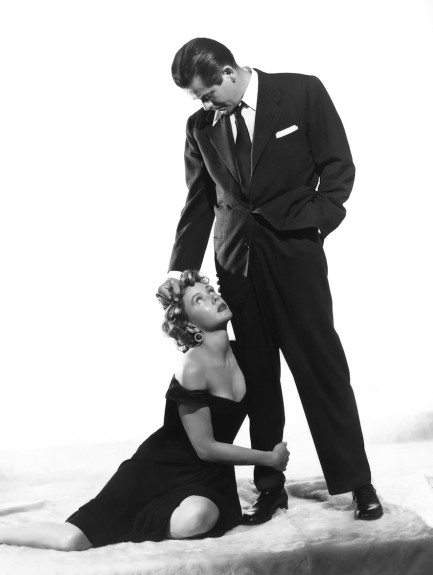 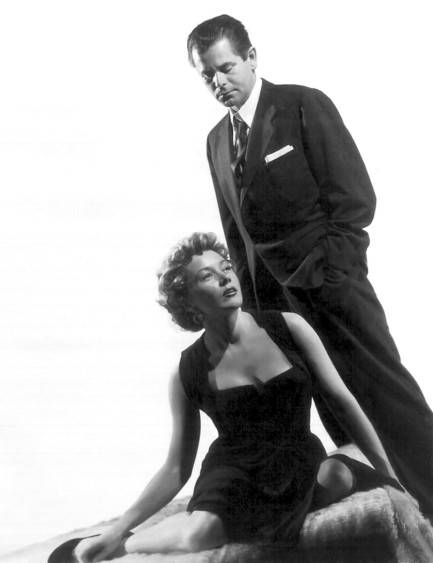 A while back we shared a promo photo of Glenn Ford and Gloria Grahame from 1953's The Big Heat that was meant to imply oral sex (it absolutely was, and you can see for yourself here). We commented on its weirdness, and noted that an actress would probably not be asked or made to pose that way today. The shot got us thinking about whether there were other kneeling promo shots from the mid-century era, and above you see two others from The Big Heat. Below we have more such shots, and while none are as jarring as that previous promo, they're all interesting. We assumed there would be few if any featuring kneeling males, but we found a couple. Even so, there are probably scores more kneeling actresses that we missed. While many of shots took the form they did to highlight the criminal/victim themes in their parent films, you still have to wonder what else—consciously or not—was in the various photograhers' minds. Anyway, just some food for thought this lovely Thursday. Ready, set discuss! 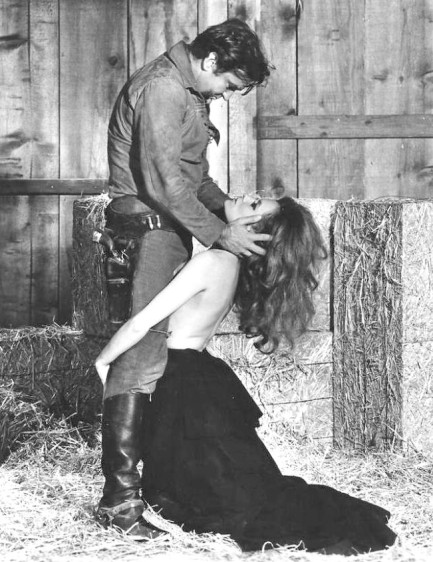 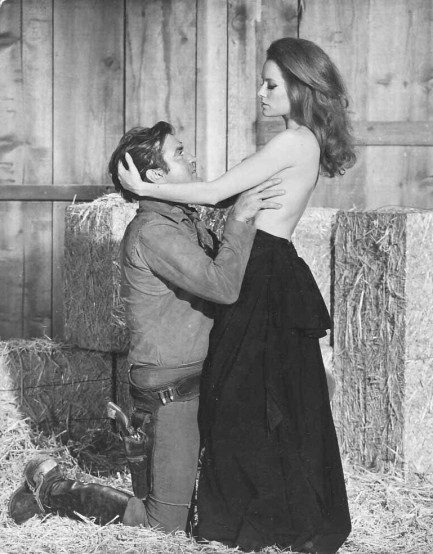 Rod Taylor and Luciana Pauluzzi swap subordinate positions for 1967's Chuka. Rod Taylor and Luciana Pauluzzi swap subordinate positions for 1967's Chuka.
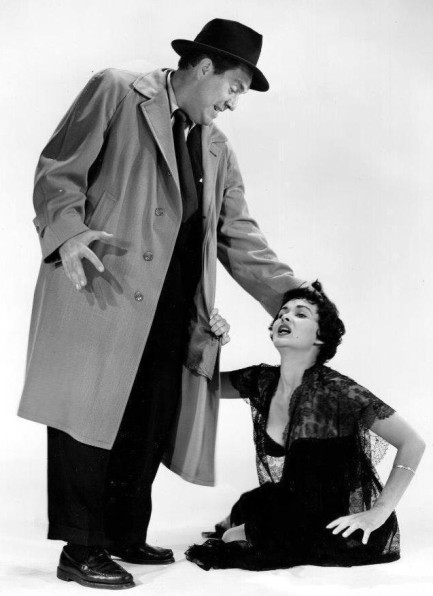 Edmund O'Brien goes for the time honored hair grab on Marla English for 1954's Shield for Murder. Edmund O'Brien goes for the time honored hair grab on Marla English for 1954's Shield for Murder.
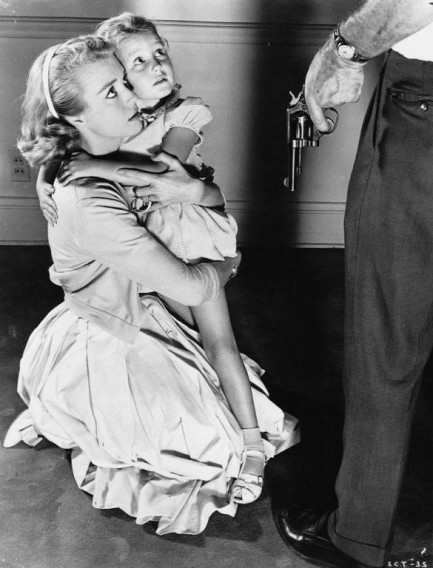 Inger Stevens and Terry Ann Ross for Cry Terror, an adaptation of a novel we talked about a few years ago. Inger Stevens and Terry Ann Ross for Cry Terror, an adaptation of a novel we talked about a few years ago.
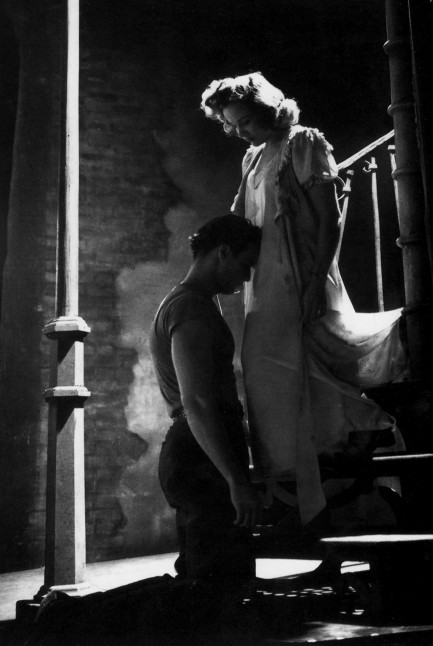 Kim Hunter soothes an overheated Marlon Brando in a promo for 1951's A Streetcar Named Desire. Kim Hunter soothes an overheated Marlon Brando in a promo for 1951's A Streetcar Named Desire.
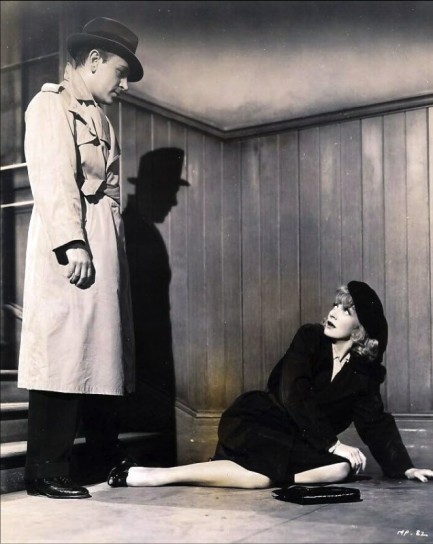 George Raft menaces Marlene Dietrich in the 1941 comedy Manpower. George Raft menaces Marlene Dietrich in the 1941 comedy Manpower.
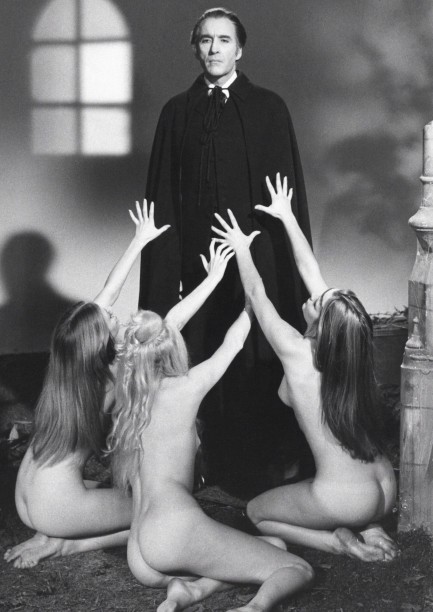 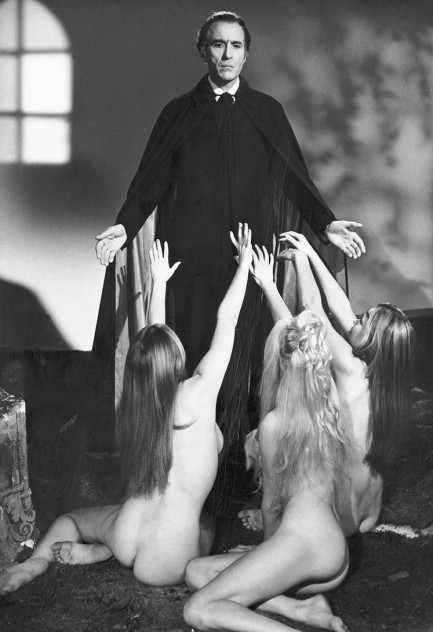 As promos go, these actually make sense. They show three unidentified models mesmerized by vampire Christopher Lee for 1970's Taste the Blood of Dracula. As promos go, these actually make sense. They show three unidentified models mesmerized by vampire Christopher Lee for 1970's Taste the Blood of Dracula.
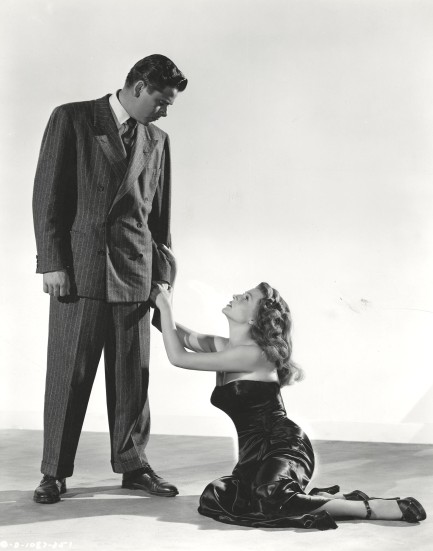 Glenn Ford is at it again, this time looming over Rita Hayworth for the 1946 classic Gilda. Glenn Ford is at it again, this time looming over Rita Hayworth for the 1946 classic Gilda. 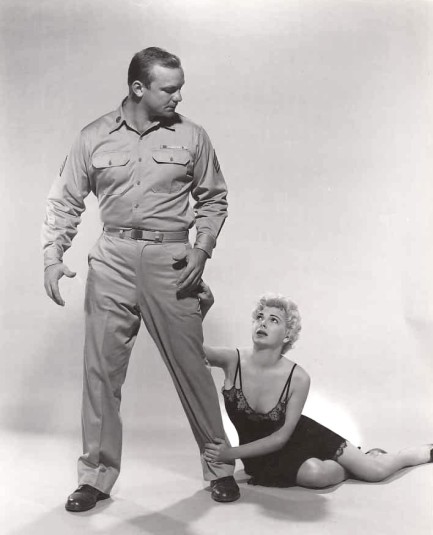 Aldo Ray and Barbara Nichols for 1958's The Naked and the Dead. Aldo Ray and Barbara Nichols for 1958's The Naked and the Dead.
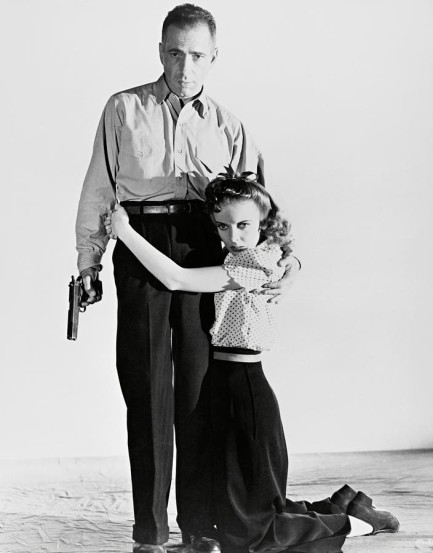 This one shows less domination and more protectiveness, as Humphrey Bogart prepares to defend Ida Lupino for High Sierra, 1941. This one shows less domination and more protectiveness, as Humphrey Bogart prepares to defend Ida Lupino for High Sierra, 1941.
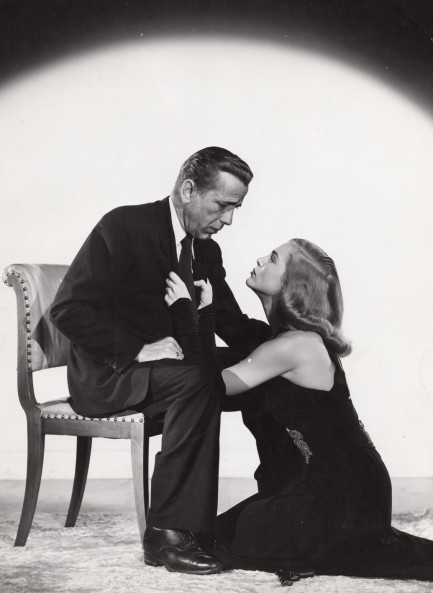 Humphrey once more. Here he's with Lizabeth Scott for Dead Reckoning, 1947. Humphrey once more. Here he's with Lizabeth Scott for Dead Reckoning, 1947.
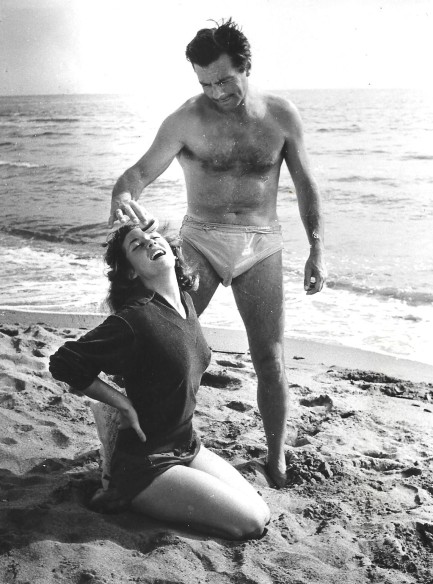 This shot shows Brazilian actress Fiorella Mari with an actor we can't identify in a movie we also can't identify. This shot shows Brazilian actress Fiorella Mari with an actor we can't identify in a movie we also can't identify.
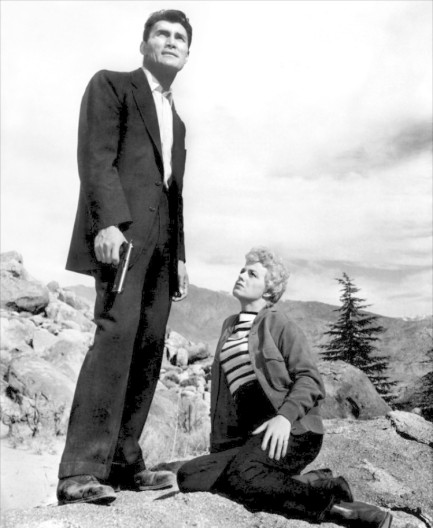 Shelly Winters and Jack Palance climb the highest mountain together for I Died a Thousand Times, 1955. Shelly Winters and Jack Palance climb the highest mountain together for I Died a Thousand Times, 1955.
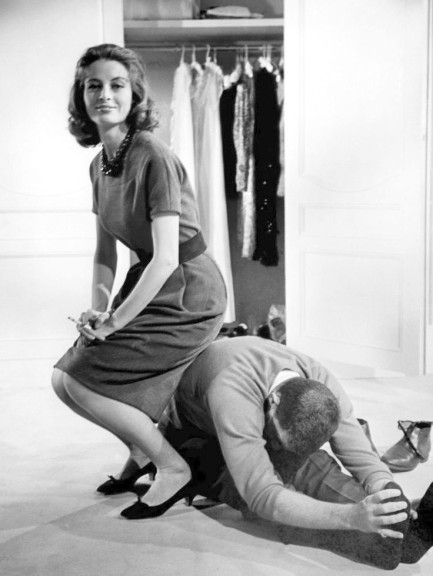 As we said, we didn't find as many examples of kneeling men, but we found this gem—Cappucine makes a seat of director Blake Edwards on the set of The Pink Panther in 1963. Does this count, though? While Edwards is subordinate, he isn't kneeling and it really isn’t a legit promo. As we said, we didn't find as many examples of kneeling men, but we found this gem—Cappucine makes a seat of director Blake Edwards on the set of The Pink Panther in 1963. Does this count, though? While Edwards is subordinate, he isn't kneeling and it really isn’t a legit promo.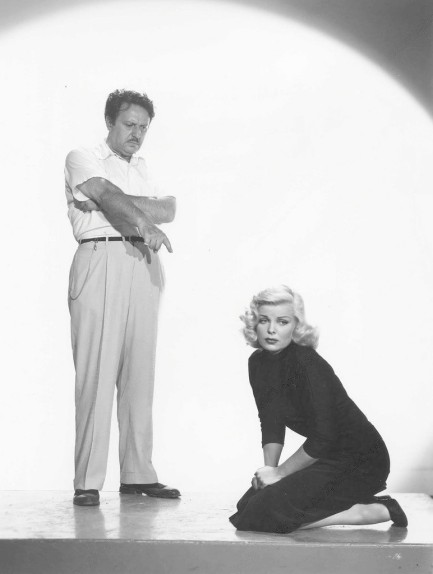 And lastly, in a curious example, Hugo Haas seems to tell Cleo Moore to stay in a shot made for 1953's One Girl's Confession. And lastly, in a curious example, Hugo Haas seems to tell Cleo Moore to stay in a shot made for 1953's One Girl's Confession.
 Any port in a storm—except maybe this one. 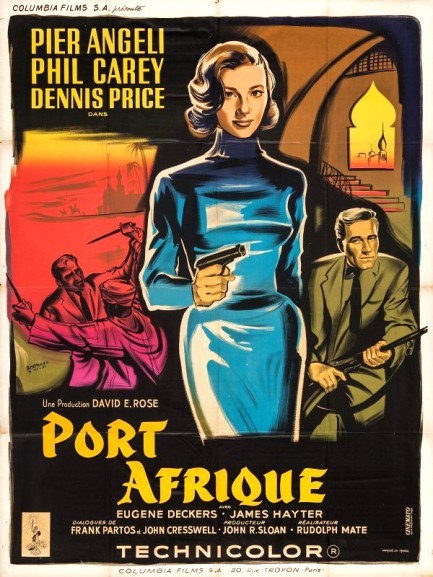
This French poster for the British made film Port Afrique was painted in a style that made us certain it was the work of Constantin Belinsky. But nope—it's signed by André Bertrand, and it's a very nice piece. As the art indicates, the movie is a North African adventure, a vehicle for Italian rising star Pier Angeli, and it can be described with one word—exotic. The filmmakers turned the E dial up to 11, location shooting in Tangier to create a fictional city of Port Afrique that's part Berber, part French, and part Spanish. Casablanca comparisons are inevitable, but solely in terms of exteriors Port Afrique is greatly superior. There's simply nothing like the real thing. The movie is also shot in color, which adds to its appeal, even if it detracts a bit from its noirish ambitions.
As in Casablanca, much of the action in Port Afrique revolves around a bar, in this case Le Badinage, which seemingly can afford to have more performers than customers. The bar's beautiful chanteuse—there's always a beautiful chanteuse—is played by the elfish Angeli, who's stuck in town without a passport and suffering under the attentions of the proprietor Nino. The threat in his overtures is unspoken but clear—no punani, no passport. Into this situation arrives a wounded American pilot with the unlikely name Rip Reardon, played by future b-movie stalwart Phil Carey. After his onscreen run he would find himself in soap opera purgatory as Asa Buchanan on One Life To Live, but here he gets his chance to help anchor a big drama. Shortly after Rip arrives his wife turns up dead. The cops call it a suicide, but Rip decides to take the investigation into his own hands, with all the usual twists and turns.
Port Afrique has a lot of problems. The script is clunky and improbable, the motivations of its characters murky, and the chemistry between its stars lukewarm. Carey ended up on soap operas for a reason, clearly on display here. He has little range, and none of the heft needed for his role. As for Angeli, she never became the superstar her advocates intended, and again, you can see why. She's better than Carey for sure, yet she still lacks the fire her role needs. But here's the thing—we think, for serious film buffs, the movie is worth watching anyway. It looks amazing, from the cinematography to the production design, and its goal of being a Technicolor noir is worth examination and discussion. But casual film fans may want to steer clear. After premiering in the U.S. in 1956 Port Afrique reached France today in 1957.
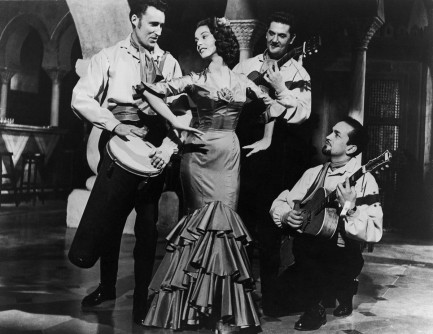 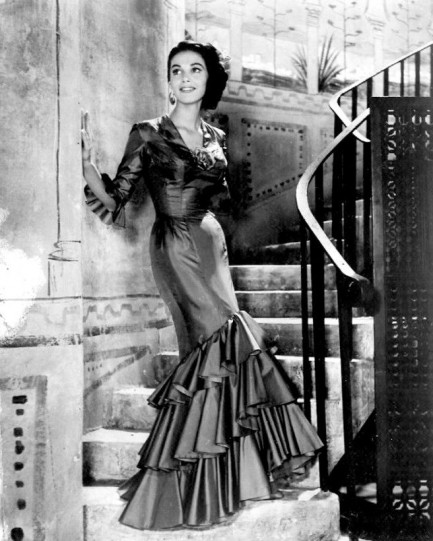 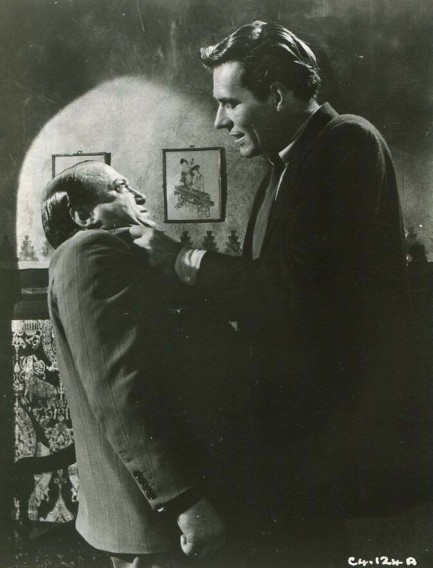 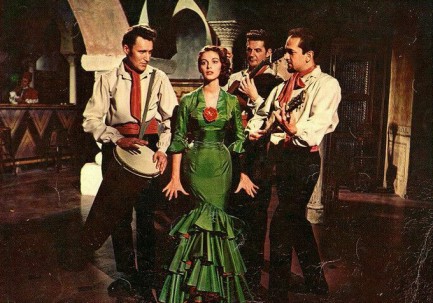 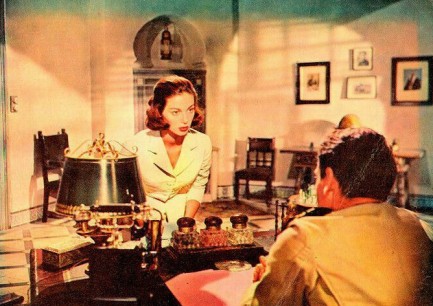 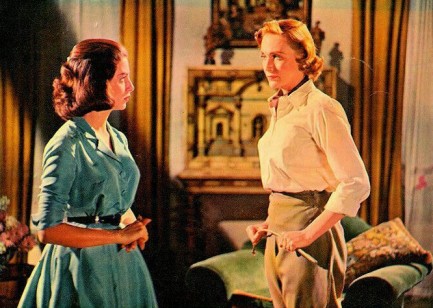 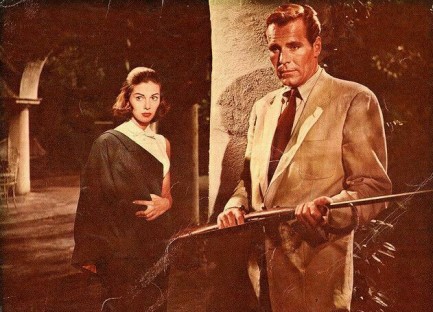 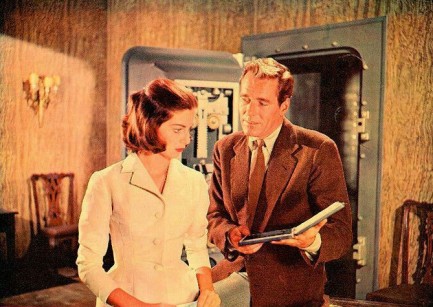  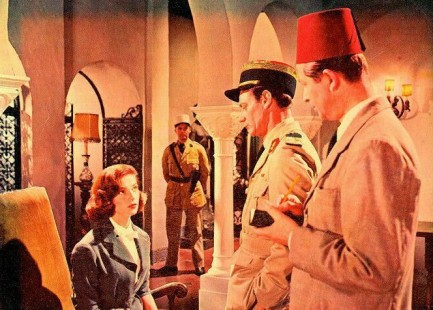 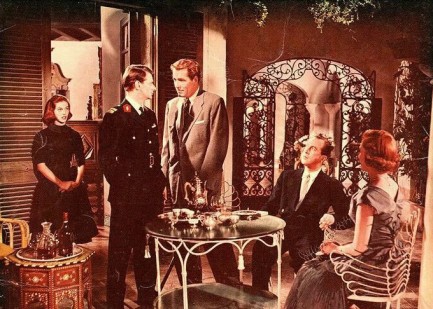 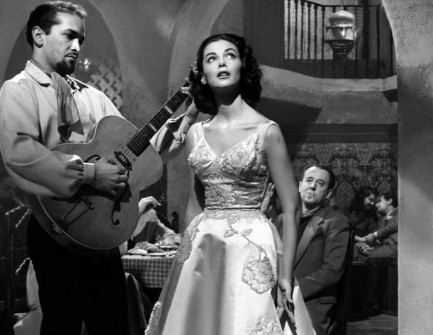 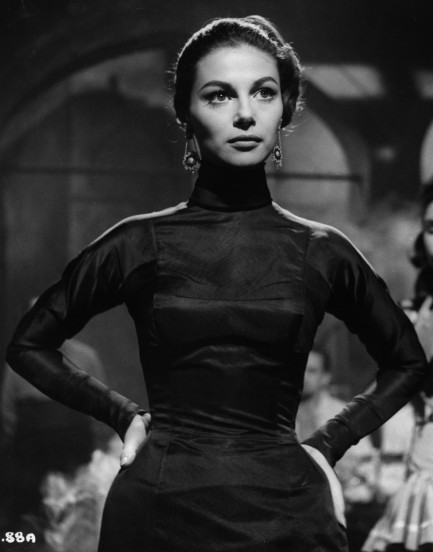
 He didn't become a doctor by quitting when things got tough. 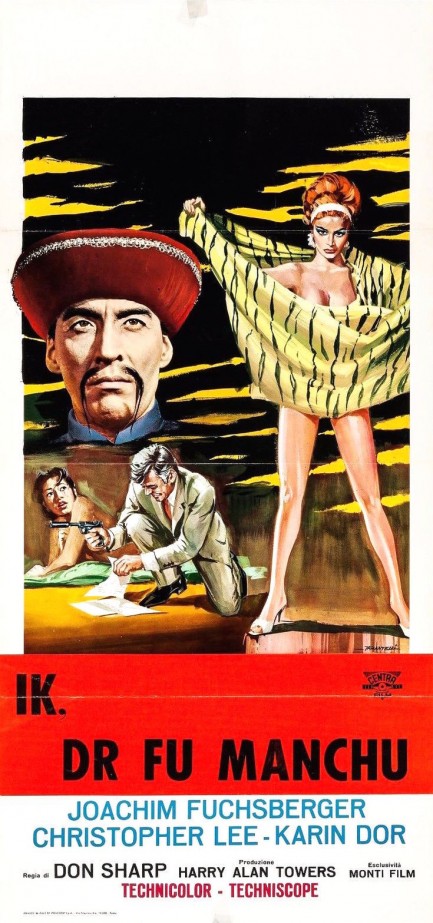
Above is an eye catching Italian poster painted by Ezio Tarantelli for Ik. Dr Fu Manchu, aka The Face of Fu Manchu, part of a series of films based on Chinaphobic novels by Sax Rohmer. According to IMDB and other sources this film played in Italy as Fu Manciù A.S.3: Operazione Tigre, but this poster suggests otherwise, or at least suggests it played there under more than one title. There's no known release date, but it would have shown sometime in 1966. We gave it a look, and plotwise the infamous crime boss Fu Manchu is executed via beheading in the first scene, much to the delight of various police authorities, but they later suspect that a double died—a man with Fu's face, hypnotized into marching to his own death. And of course, they're right. Fu can do most anything he sets his mind to, including setting other people's minds to doing things detrimental to their earthly existence. Christopher Lee, who specialized in movies of this ilk, occupies the starring slot, with his yellow make-up shading toward a grayish brown. Other cast members include Nigel Green, Karin Dor, Joachim Fuckburger—er, we mean Fuchsberger—and several more white folk pretending to be Asian. You'll have to ignore that and other racist aspects of the film. Or not, at your option. Setting that aside, is The Face of Fu Manchu any good? Umm... no, we wouldn't say so. But you might get a laugh or two from it. 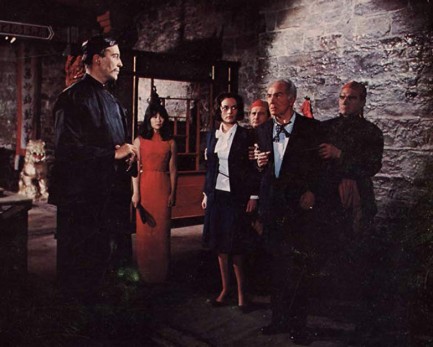 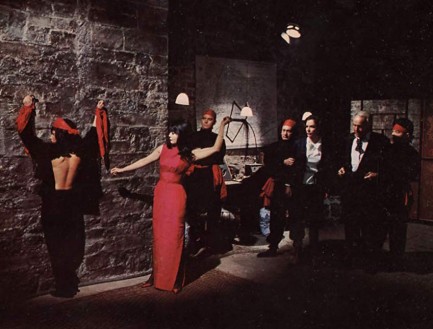 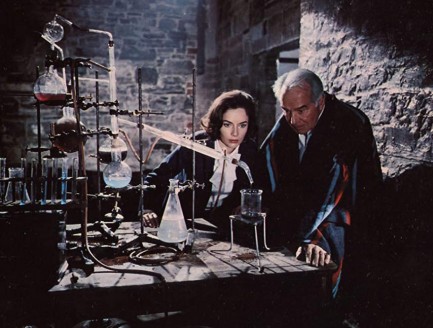 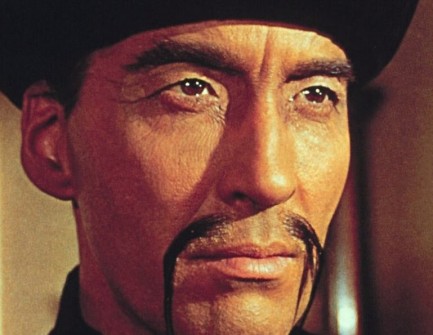
 Big trouble in little China. 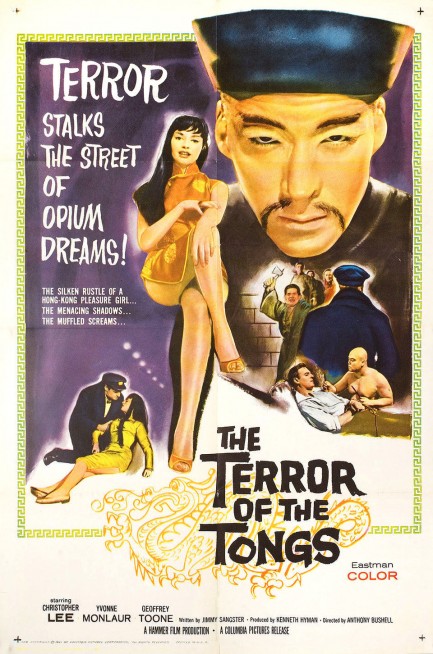
After running across a poster this pretty we simply had to watch The Terror of the Tongs. Of course, the quality of an old Hollywood movie set in Asia is inversely proportional to the number of times you hear a gong. In The Terror of the Tongs you hear quite a few. You know the drill. Someone says the bad guys' headquarters is in the old part of town—GONG!—cut to the villains in their lair. Usually such movies feature white cast members Asianized with make-up and putty eyelids, and this is also an inverse indicator of quality. But on that score Tongs defies the rule. Most major cast members are white, but the movie, though inherently racist, is not a bad piece of entertainment. A paradox? Indeed, young one. But we mean to say that once you get over the minstrel aspects—if you ever do, and we don't suggest that you should—what you get here is a fun little tale of a white ship captain in the mysterious Orient dealing with forces he can barely comprehend. When he accidentally comes into possession of a valuable item it results in the murder of his airhead daughter and sends him on a mission to make the responsible tong—i.e. Hong Kong mafia—pay. Geoffrey Toone plays the noble and aggrieved captain, while veteran Brit actor Christopher Lee stars as the evil tong honcho Chung King. The film is beautifully made, with big sets and florid colors that dazzle the eye, and it's less predictable than you'd expect. It's clear the filmmakers were deadly serious, which makes it funny that the final product is considered pure cheese today. If you can look past the yellow makeup and prosthetic eyelids you'll find some entertainment here. And if not, at the very least you'll be thankful how far we've all come. The Terror of the Tongs premiered today in 1961. 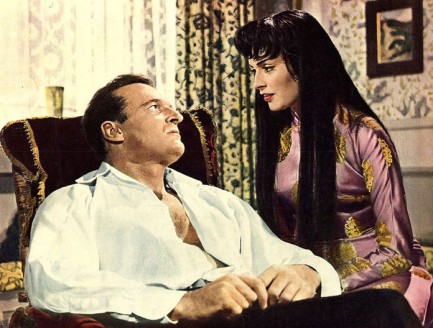 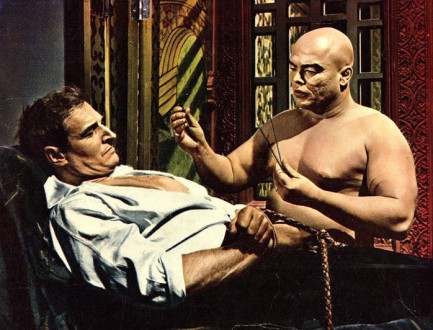 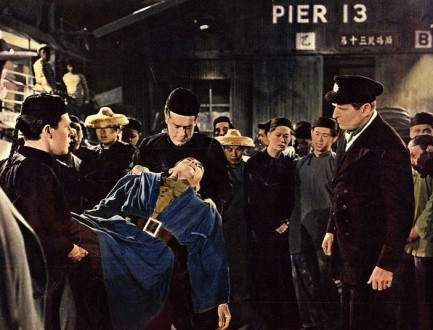 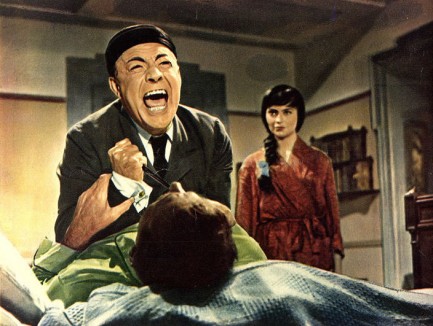 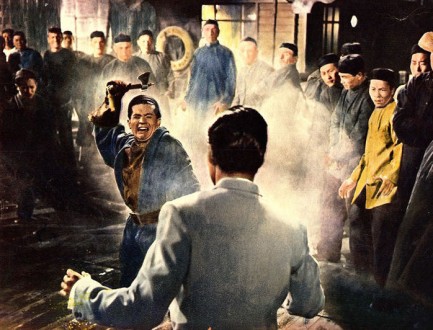 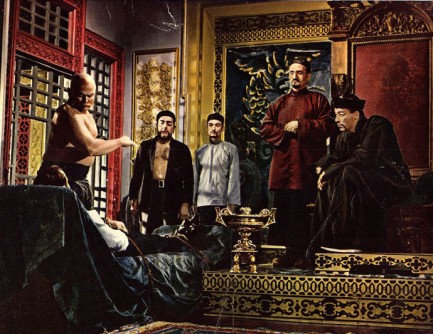
 The moment you doubt is the moment it stops being real. 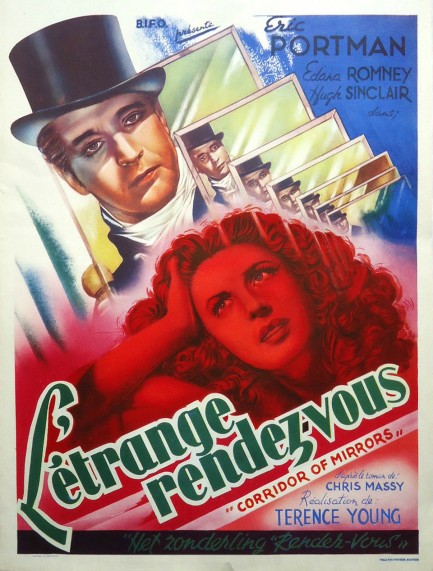
Corridor of Mirrors is fascinating movie, though not one everyone will appreciate. There’s an actual corridor of mirrors, and it’s a place of infinite reflections and madness, located in the sprawling mansion of man, played by Eric Portman, who believes he’s the reincarnation of someone who lived four-hundred years ago. As they say, when you’re rich you’re not crazy—you’re merely eccentric. The problem, though, is that Portman believes he was in love with a woman way back then, and that she has been reincarnated too, in the person of Edana Romney. This is very interesting work from a director—Terrence Young—who would go on to helm three James Bond movies (trivia: Lois Maxwell, the original Miss Moneypenny, makes an appearance here, as does future Hammer horror icon and Tolkien baddie Christopher Lee). 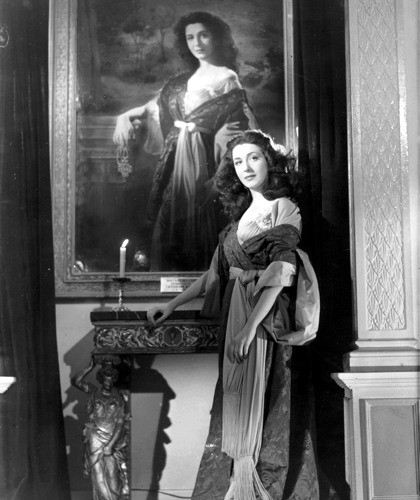 Perhaps the most successful element of Corridor of Mirrors is how the audience is dragged into the lead’s carefully constructed fantasy world. The film takes place in modern (1948) times, but by midway through, it has become a Renaissance period piece, as the camera rambles through Portman’s foreboding mansion where nary a lamp or electrical convenience of any sort is found. The use of candles is particularly effective when Portman unveils a painting of his centuries-old love—gasp!—she looks exactly like Romney. Well, maybe not so shocking, but the appearance of a flashlight late in the proceedings is actually shocking, as it’s a reminder that the previous hour has been spent inside the Neverland of a madman. Perhaps the most successful element of Corridor of Mirrors is how the audience is dragged into the lead’s carefully constructed fantasy world. The film takes place in modern (1948) times, but by midway through, it has become a Renaissance period piece, as the camera rambles through Portman’s foreboding mansion where nary a lamp or electrical convenience of any sort is found. The use of candles is particularly effective when Portman unveils a painting of his centuries-old love—gasp!—she looks exactly like Romney. Well, maybe not so shocking, but the appearance of a flashlight late in the proceedings is actually shocking, as it’s a reminder that the previous hour has been spent inside the Neverland of a madman. Is Corridor of Mirrors a film noir? Not even. It’s been placed on a double bill at Noir City with the stylistically similar The Picture of Dorian Gray, but noir fans might be disappointed to have bought tickets for this particular night. In fact, this year's festival features a high proportion of non-noir cinema—ten of the offerings aren't film noir, and arguably even a couple more fall outside the category. Still, Corridor of Mirrors is a nice melodrama, dripping with irony by the end, and worth seeing on its own merits. A British production, it seems as though no English language posters survive, so at top you see the nice promo from its run in Belgium, where it was called L’etrange rendezvous. 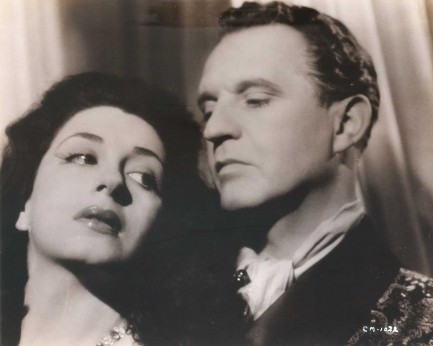
 Satan claws is coming to town. 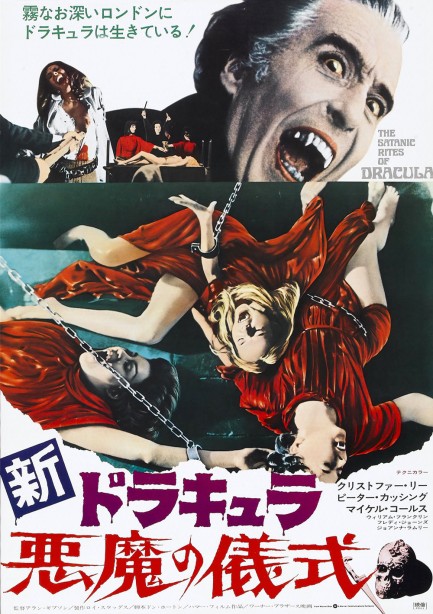
Nothing says Christmas like a cheesy horror movie, and they don’t get much cheesier than Hammer Film Productions’ b-flick Satanic Rites of Dracula. This was the seventh and last movie to feature Christopher Lee playing Dracula, a role he inhabited with great gusto, and the third with Peter Cushing as Van Helsing. In other words, Hammer really knew how to beat a dead horse. Plenty of summaries of this online, so we won’t bother. We just wanted to show you the nice art. Satanic Rites of Dracula first played in Japan today in 1974.
|
 |
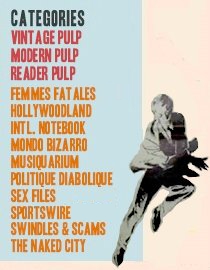
The headlines that mattered yesteryear.
2003—Hope Dies
Film legend Bob Hope dies of pneumonia two months after celebrating his 100th birthday. 1945—Churchill Given the Sack
In spite of admiring Winston Churchill as a great wartime leader, Britons elect
Clement Attlee the nation's new prime minister in a sweeping victory for the Labour Party over the Conservatives. 1952—Evita Peron Dies
Eva Duarte de Peron, aka Evita, wife of the president of the Argentine Republic, dies from cancer at age 33. Evita had brought the working classes into a position of political power never witnessed before, but was hated by the nation's powerful military class. She is lain to rest in Milan, Italy in a secret grave under a nun's name, but is eventually returned to Argentina for reburial beside her husband in 1974. 1943—Mussolini Calls It Quits
Italian dictator Benito Mussolini steps down as head of the armed forces and the government. It soon becomes clear that Il Duce did not relinquish power voluntarily, but was forced to resign after former Fascist colleagues turned against him. He is later installed by Germany as leader of the Italian Social Republic in the north of the country, but is killed by partisans in 1945.
|

|
|
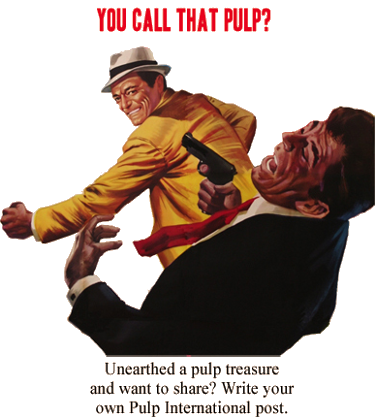
It's easy. We have an uploader that makes it a snap. Use it to submit your art, text, header, and subhead. Your post can be funny, serious, or anything in between, as long as it's vintage pulp. You'll get a byline and experience the fleeting pride of free authorship. We'll edit your post for typos, but the rest is up to you. Click here to give us your best shot.
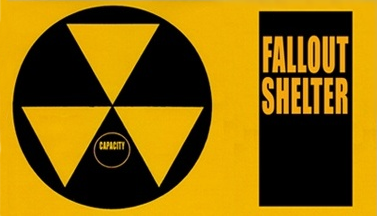
|
|




 Rod Taylor and Luciana Pauluzzi swap subordinate positions for 1967's Chuka.
Rod Taylor and Luciana Pauluzzi swap subordinate positions for 1967's Chuka. Edmund O'Brien goes for the time honored hair grab on Marla English for 1954's Shield for Murder.
Edmund O'Brien goes for the time honored hair grab on Marla English for 1954's Shield for Murder.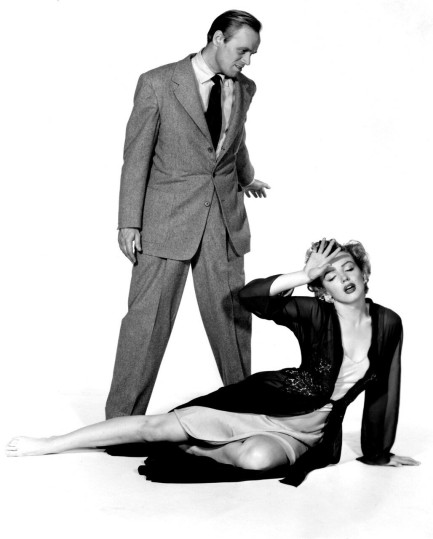 Marilyn Monroe swoons as Richard Widmark snarls for Don't Bother To Knock, 1952.
Marilyn Monroe swoons as Richard Widmark snarls for Don't Bother To Knock, 1952. Inger Stevens and Terry Ann Ross for Cry Terror, an adaptation of a novel we talked about a few years ago.
Inger Stevens and Terry Ann Ross for Cry Terror, an adaptation of a novel we talked about a few years ago. Kim Hunter soothes an overheated Marlon Brando in a promo for 1951's A Streetcar Named Desire.
Kim Hunter soothes an overheated Marlon Brando in a promo for 1951's A Streetcar Named Desire. George Raft menaces Marlene Dietrich in the 1941 comedy Manpower.
George Raft menaces Marlene Dietrich in the 1941 comedy Manpower.
 As promos go, these actually make sense. They show three unidentified models mesmerized by vampire Christopher Lee for 1970's Taste the Blood of Dracula.
As promos go, these actually make sense. They show three unidentified models mesmerized by vampire Christopher Lee for 1970's Taste the Blood of Dracula. Glenn Ford is at it again, this time looming over Rita Hayworth for the 1946 classic Gilda.
Glenn Ford is at it again, this time looming over Rita Hayworth for the 1946 classic Gilda. Aldo Ray and Barbara Nichols for 1958's The Naked and the Dead.
Aldo Ray and Barbara Nichols for 1958's The Naked and the Dead. This one shows less domination and more protectiveness, as Humphrey Bogart prepares to defend Ida Lupino for High Sierra, 1941.
This one shows less domination and more protectiveness, as Humphrey Bogart prepares to defend Ida Lupino for High Sierra, 1941. Humphrey once more. Here he's with Lizabeth Scott for Dead Reckoning, 1947.
Humphrey once more. Here he's with Lizabeth Scott for Dead Reckoning, 1947. This shot shows Brazilian actress Fiorella Mari with an actor we can't identify in a movie we also can't identify.
This shot shows Brazilian actress Fiorella Mari with an actor we can't identify in a movie we also can't identify. Shelly Winters and Jack Palance climb the highest mountain together for I Died a Thousand Times, 1955.
Shelly Winters and Jack Palance climb the highest mountain together for I Died a Thousand Times, 1955. As we said, we didn't find as many examples of kneeling men, but we found this gem—Cappucine makes a seat of director Blake Edwards on the set of The Pink Panther in 1963. Does this count, though? While Edwards is subordinate, he isn't kneeling and it really isn’t a legit promo.
As we said, we didn't find as many examples of kneeling men, but we found this gem—Cappucine makes a seat of director Blake Edwards on the set of The Pink Panther in 1963. Does this count, though? While Edwards is subordinate, he isn't kneeling and it really isn’t a legit promo. And lastly, in a curious example, Hugo Haas seems to tell Cleo Moore to stay in a shot made for 1953's One Girl's Confession.
And lastly, in a curious example, Hugo Haas seems to tell Cleo Moore to stay in a shot made for 1953's One Girl's Confession. 






























 Perhaps the most successful element of Corridor of Mirrors is how the audience is dragged into the lead’s carefully constructed fantasy world. The film takes place in modern (1948) times, but by midway through, it has become a Renaissance period piece, as the camera rambles through Portman’s foreboding mansion where nary a lamp or electrical convenience of any sort is found. The use of candles is particularly effective when Portman unveils a painting of his centuries-old love—gasp!—she looks exactly like Romney. Well, maybe not so shocking, but the appearance of a flashlight late in the proceedings is actually shocking, as it’s a reminder that the previous hour has been spent inside the Neverland of a madman.
Perhaps the most successful element of Corridor of Mirrors is how the audience is dragged into the lead’s carefully constructed fantasy world. The film takes place in modern (1948) times, but by midway through, it has become a Renaissance period piece, as the camera rambles through Portman’s foreboding mansion where nary a lamp or electrical convenience of any sort is found. The use of candles is particularly effective when Portman unveils a painting of his centuries-old love—gasp!—she looks exactly like Romney. Well, maybe not so shocking, but the appearance of a flashlight late in the proceedings is actually shocking, as it’s a reminder that the previous hour has been spent inside the Neverland of a madman.



























